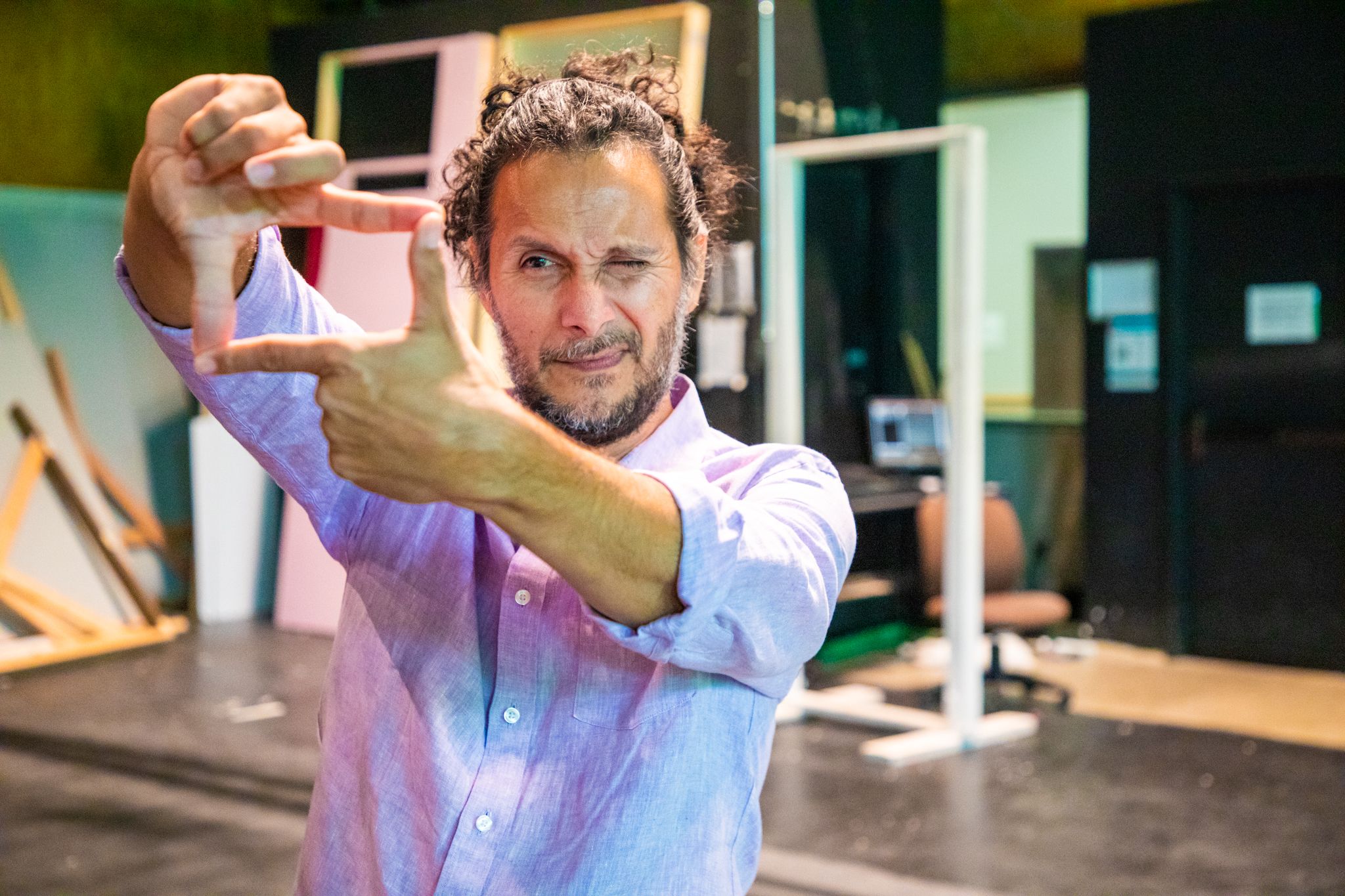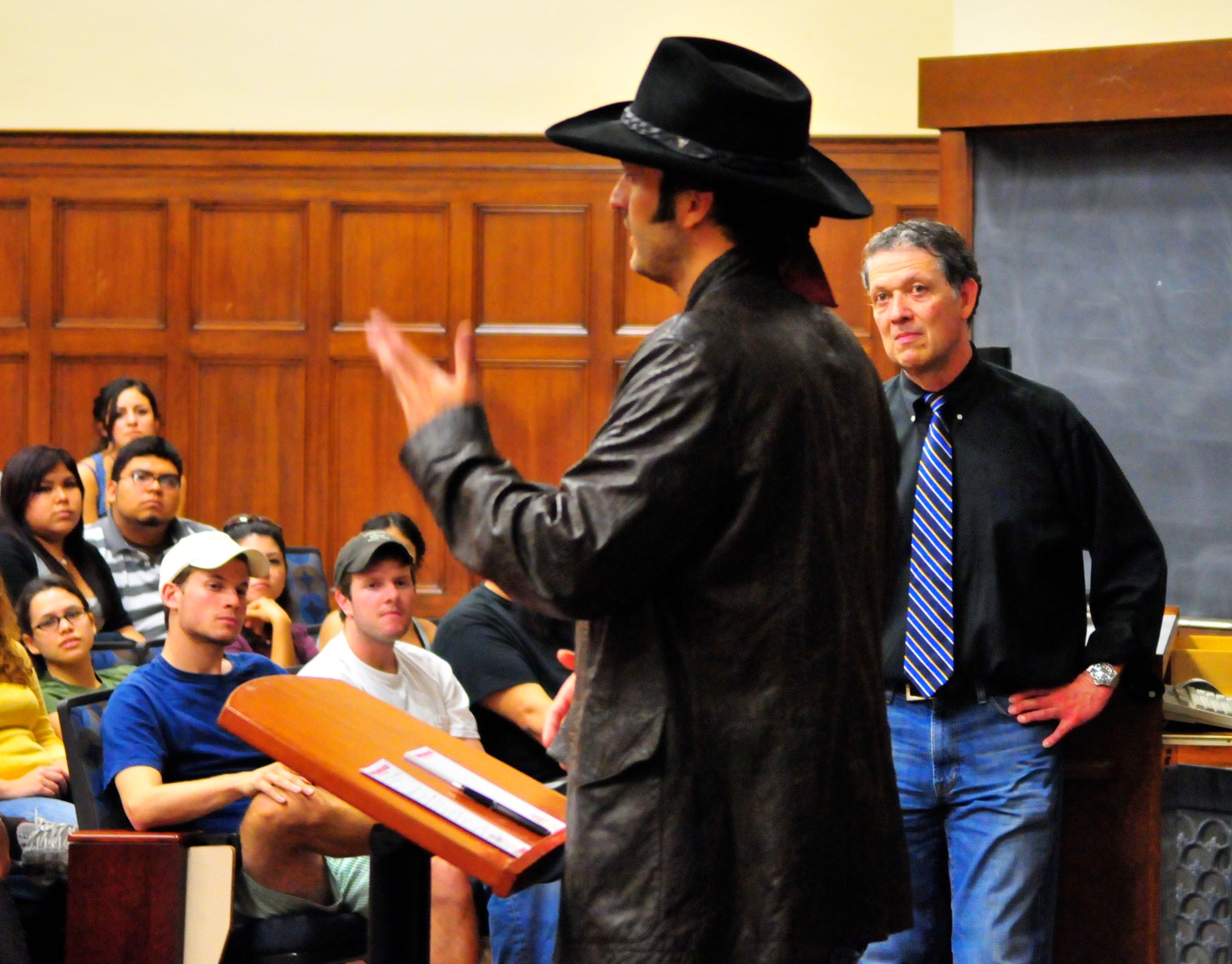Moody faculty reflect on Latino culture in media
Moody faculty reflect on Latino culture in media

At Moody College of Communication, our faculty teach students to share authentic stories and broaden their worldview. To celebrate National Hispanic Heritage Month, we are highlighting a few of those instructors and their expertise in media and communication.
STEPHANIE GRASSO
Department of Speech, Language, and Hearing Sciences assistant professor

One of the first films Stephanie Grasso watched that significantly influenced her understanding of Latino Americans in media was "Real Women Have Curves." She said it showed how the values typically associated with Latino culture can sometimes be at odds with American culture.
Grasso believes showing these differences between the two cultures is essential for many Latino Americans. Hispanic culture in mainstream media has typically been represented with harmful stereotypes, she said.
"There has been a lack of representation, for one, and when there has been representation, often the media has reduced Hispanic culture to stereotypes or distilled it down to the elements that the mainstream is most familiar with,” she said. “The diversity and the depth are lost and not well represented."
Grasso said no one film can fully represent Hispanic culture in its entirety, and we need to hear from a variety of voices. She said a recent film she watched that accurately showcases many Latino Americans' true experiences was "Sin Señas Particulares,” or “Identifying Features” in English.
"The film tells the story of families attempting to find a better life and the unfortunate danger that comes along with that in the present day, in this case between Mexico and the U.S," she said.
"The film tells the story of families attempting to find a better life and the unfortunate danger that comes along with that in the present day, in this case between Mexico and the U.S."

MIGUEL ALVAREZ
Department of Radio-Television-Film assistant professor

Miguel Alvarez is an award-winning independent filmmaker. When he was a kid in the 1980s, he said one of the only Latino actors he saw on TV was Jimmy Smits from the show “L.A. Law.”
"His presence on TV was powerful to me,” Alvarez said. “For a couple of years, I wanted to be a lawyer simply because Jimmy Smits played one on TV. Thirty-plus years later, Latinx presence in media is much better but still not fully representative of our place in American society."
The first movie Alvarez said he watched that accurately represented Latinos was “La Bamba.”
"It was a huge crossover hit with a mostly Latinx cast,” he said. “It opened the door to 'Selena' a decade later. I think the portrayal of family life and hardships for working-class Mexican families was done well and showed a side of the culture often ignored."
“For a couple of years, I wanted to be a lawyer simply because Jimmy Smits played one on TV. Thirty-plus years later, Latinx presence in media is much better but still not fully representative of our place in American society."

MARY BELTRÁN
Department of Radio-Television-Film professor

Mary Beltrán writes and teaches about Latino representation and media authorship. In her classes, students look at the history of how Latinos have been portrayed and included in media.
“In the early film and television era, Latina and Latino characters were one-dimensional, typically servants or villains,” she said. “More recently, we can sometimes find multidimensional Latina/o characters and narratives."
In 2023, Latinos are still not seen as often as they should be and are rarely seen as the main characters, Beltrán said. "Considering Latinos are 19% of the population, the diversity among Latinos is seldom depicted,” she said. “It's why we need more Latina and Latino storytellers."
Beltrán said one film that was a step forward for Latino storytelling and visibility is Luis Valdez's musical drama "Zoot Suit,” based on his Broadway musical.
"It's a Chicano retelling of the Sleepy Lagoon murder trial and Zoot Suit Riots, the attacks on Mexican Americans in 1943, which uses swing music performed by a vibrant, talented cast, including the young Edward James Olmos in a breakout role,” she said. “While this low-budget film wasn't a financial hit, it opened a door for a large swath of talented Latinx performers and creatives to enter the film industry."
"Considering Latinos are 19% of the population, the diversity among Latinos is seldom depicted."

CELESTE GONZÁLEZ DE BUSTAMANTE
School of Journalism and Media professor and associate dean for diversity, equity and inclusion

When Celeste González de Bustamante was growing up, it was rare to see Latinos or Latin Americans in movies and television shows. "One of the first movies I saw in which Latin Americans played a central role was Gregory Nava's ‘El Norte,’” she said. “The movie tells the harrowing story of a young Mayan couple from Guatemala and their journey north to the United States. Nava was one of the first to humanize stories of migrants from Latin America to the U.S."
Bustamante said that, over the past century and a half, U.S. mainstream media has tended to portray Latinos and Latin Americans in very stereotypical and negative ways. "Women were portrayed either as submissive or as the 'hot Latina,' while men were either portrayed as unintelligent, lazy, violent or all of the above,” she said. “The consequence of these portrayals has been to dehumanize entire groups of people."
Bustamante thinks "Salt of the Earth,” a movie based on a 1951 mining strike in New Mexico, was one of the first films to break from Latino stereotypes. "Latinxs starred in the film, and Mexicans and Mexican American workers were portrayed as multidimensional characters. The film also featured a female lead."
"One of the first movies I saw in which Latin Americans played a central role was Gregory Nava's ‘El Norte.' The movie tells the harrowing story of a young Mayan couple from Guatemala and their journey north to the United States. Nava was one of the first to humanize stories of migrants from Latin America to the U.S."

CHARLES RAMÍREZ BERG
Department of Radio-Television-Film professor

Charles Ramírez Berg is an expert in media studies, identity and representation, as well as industry history and criticism.
In U.S. media, he said, Latinos have been stereotyped as bandidos, drug runners, prostitutes, criminals and simpletons. "These ignorant characters didn't speak correct English, were poor and uneducated, and served as buffoons to provide comic relief or to be the villains of the film,” he said. “Sneaky, untrustworthy, uneducated and immoral, they stood in sharp contrast with the usual Anglo male hero and the Anglo female leading lady who were honest, trustworthy, well-spoken and dependable.”
In the 1980s, things started to change as films were beginning to be made by Latino writers, directors and actors that featured heroic Latino characters, Berg said.
Berg cited “Zoot Suit” as a compelling example, as well as “Stand and Deliver,” based on a true story of an inspiring high school math teacher, and “Selena,” with a career-making performance by Jennifer Lopez as the Tejano music superstar.
“And let's not forget 'El Mariachi,’ made by then-UT student Robert Rodriguez for $7,000, which played at major festivals, won international awards, was distributed by Columbia Pictures and made more than $2 million internationally,” Berg said. “At last, Latinx characters were the heroic main characters."
When Berg was growing up in El Paso, his mother took him to see "Giant” when it was re-released in 1963. "It was groundbreaking because it was the first time a major studio tackled the issue of discrimination against Mexican Americans in a big, expensive movie featuring top stars like Elizabeth Taylor, Rock Hudson and James Dean," he said.
The scene that most stood out to him was the fight in Sarge's Diner. "It's the moment in the film when the film's flawed protagonist, the wealthy rancher Bick Benedict, finally overcomes his prejudice against Mexicans. When the diner's proprietor refuses to serve a family of Mexican Americans and starts forcing them out, Bick steps in to defend them."
Berg's mother, having already seen the film, leaned over to him right before this scene and whispered, "Pay attention to this."
"Though she never brought it up again, she was using that scene to teach me about discrimination, telling me what it felt like to be a Mexican American in Texas,” Berg said. “She was showing me the kind of bigotry that Mexican Americans had experienced, that she herself had experienced. She was encouraging me to stand up for our civil rights as Americans. Bick loses the fight, but that didn't matter. What mattered, my mother was saying, was doing the right thing."
“She was showing me the kind of bigotry that Mexican Americans had experienced, that she herself had experienced. She was encouraging me to stand up for our civil rights as Americans. Bick loses the fight, but that didn't matter. What mattered, my mother was saying, was doing the right thing."


